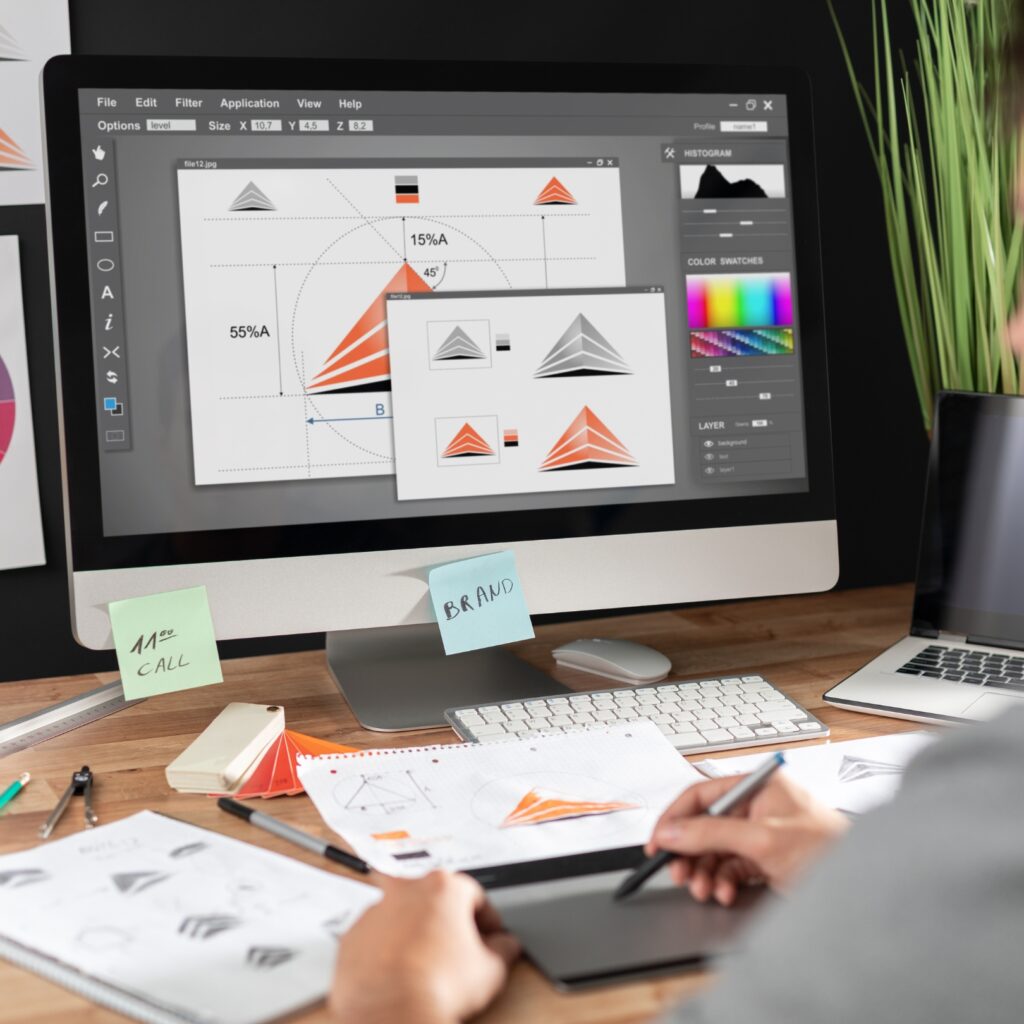
Your logo is often the first thing potential customers notice about your business. It’s the visual foundation of your brand identity and can make or break that crucial first impression. A well-designed logo builds trust, creates recognition, and helps your business stand out in a crowded marketplace.
Whether you’re starting a new business, rebranding an existing company, or simply want to understand the art of logo design, this guide will teach you everything you need to know. From basic principles to practical steps, you’ll learn how to create logos that not only look professional but also drive real business results.
What is Logo Design?
Logo design is the process of creating a visual symbol that represents your brand, business, or organization. It’s more than just making something look pretty—it’s about strategic visual communication that instantly tells people who you are and what you stand for.
A logo serves as your brand’s face in the world. Think of iconic logos like Nike’s swoosh, Apple’s apple, or McDonald’s golden arches. These simple symbols instantly trigger recognition and emotional responses from millions of people worldwide.
Professional logo design combines creativity with strategy. It considers your target audience, industry standards, and business goals to create a mark that works across all your marketing materials, from business cards to billboards.
Why Logo Design Matters for Your Business
Builds Brand Recognition
A distinctive logo helps customers remember and identify your business among competitors. Studies show people remember visual information 65% better than text alone, making your logo a powerful memory trigger.
Establishes Credibility
A professional logo signals that you’re serious about your business. It builds immediate trust with potential customers and sets you apart from competitors with amateur-looking designs.
Creates Emotional Connection
Colors, shapes, and fonts in logos trigger psychological responses. The right design can make people feel trust, excitement, or luxury—emotions that influence purchasing decisions.
Supports Marketing Efforts
Your logo appears everywhere your brand does—websites, social media, packaging, advertisements. A strong logo creates consistency across all touchpoints, making your marketing more effective.
Types of Logo Designs
Wordmarks (Text-Based Logos)
These logos use stylized company names as the main design element. Examples include Google, Coca-Cola, and Disney. They work best for companies with short, memorable names.
Best for: Companies with distinctive names that want to build name recognition.
Lettermarks (Initial-Based Logos)
These use company initials or abbreviations. Think IBM, HBO, or CNN. They’re perfect for companies with long names or multiple words.
Best for: Companies with long names or professional services wanting a clean, sophisticated look.
Symbol/Icon Logos
These use images or symbols to represent the brand. Apple’s apple, Twitter’s bird, and Shell’s shell are classic examples. They can be very powerful but require time to build recognition.
Best for: Established companies or brands with strong visual associations.
Combination Logos
These combine text and symbols, offering the best of both worlds. Examples include Adidas, Burger King, and Lacoste. They provide flexibility—you can use the full logo or just the symbol once recognition is established.
Best for: Most businesses, especially those building brand recognition.
Emblems
These enclose text within symbols or badges, creating a traditional, official appearance. Harley-Davidson, Starbucks, and many sports teams use emblems effectively.
Best for: Companies wanting to convey tradition, quality, or heritage.
The Logo Design Process: Step-by-Step
Step 1: Research and Discovery
Before sketching anything, understand your brand deeply:
- What does your business do?
- Who is your target audience?
- What makes you different from competitors?
- What personality do you want to convey?
Study your competition and successful logos in your industry. Look for gaps you can fill and ways to differentiate yourself.
Step 2: Brainstorm and Sketch
Start with pen and paper. Sketch 20-30 rough ideas without worrying about perfection. This analog approach encourages creativity and prevents you from getting stuck in software limitations.
Focus on exploring different directions—wordmarks, symbols, combinations. Don’t judge ideas too quickly; sometimes the best concepts come from unexpected places.
Step 3: Choose Your Direction
Select your 3-5 strongest concepts and develop them further. Consider:
- Does it fit your brand personality?
- Will it work at different sizes?
- Is it unique in your industry?
- Does it appeal to your target audience?
Step 4: Digital Development
Use professional design software like Adobe Illustrator to create vector versions of your concepts. Vector graphics scale to any size without losing quality—essential for logo applications.
Pay attention to:
- Proper proportions and spacing
- Clean, smooth lines
- Consistent stroke weights
- Balanced composition
Step 5: Test and Refine
Test your logo in various contexts:
- Business cards and letterheads
- Website headers and social media
- Large signage and small favicons
- Black and white versions
Get feedback from trusted colleagues or potential customers, but remember that design decisions should be based on strategy, not personal preferences.
Step 6: Finalize and Deliver
Create final files in multiple formats:
- Vector files (AI, EPS, SVG) for scalability
- PNG files with transparent backgrounds
- JPG files for web use
- Black and white versions
Essential Design Principles
Keep It Simple
Simple logos are more memorable and versatile. Avoid cramming too many elements into one design. If you can’t describe your logo in one sentence, it’s probably too complex.
Make It Memorable
Your logo should stick in people’s minds. This often comes from unique shapes, clever use of negative space, or unexpected color combinations—but always within the bounds of good taste.
Ensure Scalability
Your logo must work at business card size (1 inch) and billboard size (20 feet). Avoid thin lines and small details that disappear when scaled down.
Choose Colors Wisely
Colors evoke emotions:
- Blue: Trust, stability, professionalism
- Red: Energy, passion, urgency
- Green: Growth, nature, harmony
- Purple: Luxury, creativity, mystery
- Black: Elegance, sophistication, power
Always design in black and white first. If it works without color, color will enhance it.
Select Appropriate Typography
Font choice communicates personality:
- Serif fonts: Traditional, trustworthy, established
- Sans-serif fonts: Modern, clean, approachable
- Script fonts: Elegant, creative, personal
Logo Design Tools and Resources
Professional Software
- Adobe Illustrator: Industry standard for vector graphics
- Sketch: Popular among digital designers
- Figma: Great for collaborative design
Free Alternatives
- Canva: User-friendly with templates
- GIMP: Free photo editor
- Inkscape: Open-source vector graphics
Typography Resources
- Google Fonts: Free, high-quality fonts
- Adobe Fonts: Premium font library
- Font Squirrel: Free commercial fonts
Common Logo Design Mistakes to Avoid
Making It Too Complex
Overcomplicating your design makes it harder to remember and reproduce. Stick to one main concept and execute it well.
Following Trends Blindly
While staying current is important, trendy designs quickly become outdated. Focus on timeless principles with contemporary touches.
Ignoring Your Audience
Your logo should appeal to your target customers, not just your personal taste. Consider their age, culture, and preferences.
Skipping the Black and White Test
If your logo doesn’t work in black and white, it’s too dependent on color. Strengthen the fundamental design first.
Using Poor Quality Images
Always work with high-resolution vector graphics. Pixelated or blurry logos look unprofessional and can’t be scaled properly.
Logo Design Best Practices
Start with Strategy
Every design decision should support your brand strategy. Ask “why” for every element you include.
Create Multiple Versions
Develop horizontal, vertical, and square versions. You’ll need different orientations for different applications.
Test Across Applications
See how your logo looks on business cards, websites, t-shirts, and signage. It should work everywhere your brand appears.
Protect Your Investment
Keep master files in multiple formats and consider trademark protection for valuable logos.
Document Usage Guidelines
Create simple guidelines showing correct logo usage, colors, and spacing to ensure consistent application.
Measuring Logo Success
A successful logo should:
- Increase brand recognition over time
- Generate positive feedback from customers
- Work effectively across all marketing materials
- Feel timeless rather than trendy
- Differentiate your brand from competitors
Track metrics like brand awareness, website traffic, and customer feedback to measure your logo’s impact on business performance.
Conclusion
Logo design is both an art and a strategic business tool. While creating an effective logo requires creativity and design skills, the most important element is strategic thinking about your brand and audience.
Remember that great logos often look simple but result from careful research, multiple iterations, and strategic decision-making. Whether you design your own logo or work with professionals, understanding these fundamentals will help you create a visual identity that truly represents your brand.
Take time to research, experiment, and refine your concepts. Your logo is often the first impression customers have of your business—make it count. With the right approach, your logo can become one of your most valuable business assets, building recognition and trust that drives long-term success.
Start with strategy, keep it simple, and focus on creating something that will serve your brand well for years to come. Good logo design is an investment in your business’s future.

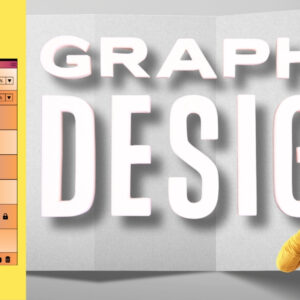
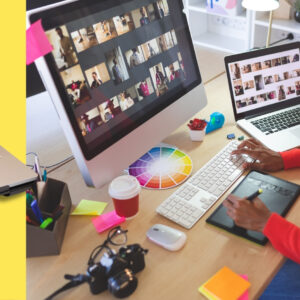
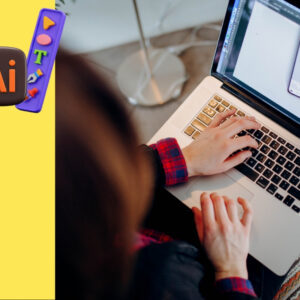
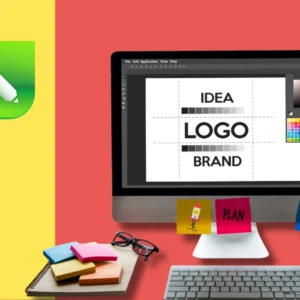
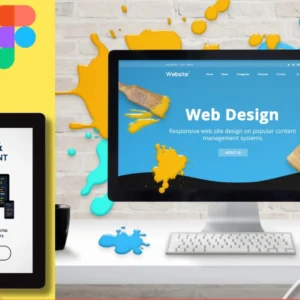
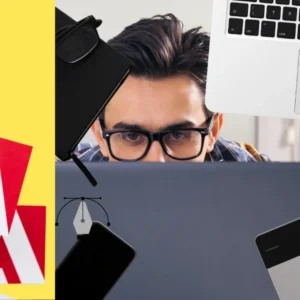
Add a Comment